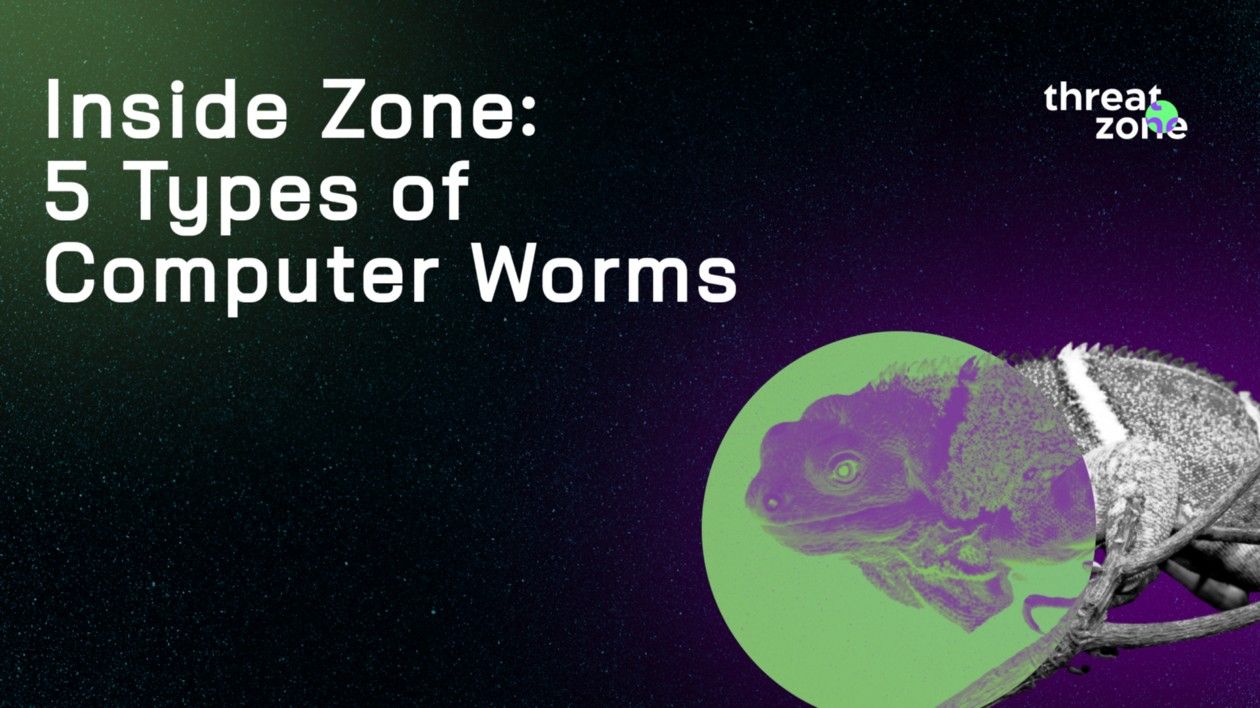Inside Zone: 5 Types of Computer Worms

If there is one thing we all know about technology, it is that it can be used maliciously in a variety of ways.
Today’s cybercrime industry is massive, with attackers coming up with new ways to deceive unsuspecting victims every year.
Computer worms are a particularly common mode of attack. But what exactly is a worm, and how many different kinds are there?
Let’s find out further down. 👇
A worm is a type of malware that can replicate itself as it moves from device to device with no human intervention required.
This allows it to spread across multiple computers at the same time, causing maximum damage.

1.Email Worms
Email worms (or mass-mailer worms) spread via email, as the name implies. They frequently do this via email attachments, which are common vehicles for malware propagation.
An email worm can also spread via a link contained within the body of an email. The worm’s code is activated when the user opens the attachment, allowing it to infect the device in question. If, on the other hand, the worm is in the form of a link, clicking on it will take you to a malicious website designed to infect you with malware.
There are multiple ways through which one can slip an email worm into an email.
They include:
- Using Windows MAPI functions
- Inserting itself into the text of an email
- Using MS Outlook services
2. Internet Worms
Internet worms (also known as network worms) are programs that exploit flaws in an operating system.
This type of worm has existed since the late twentieth century when operating systems were primitive. Although Windows was the first operating system to be targeted by internet worms, any operating system can now be exploited.
This worm will use the internet on an infected device to run a scan looking for other devices with the security vulnerability it has already exploited, allowing it to spread more quickly.
The risk of worm infection is one of the reasons why it is critical to keep your operating systems as up-to-date as possible.

3. File-Sharing Worms
File-sharing platforms are now extremely popular on the internet, but as with most things on the internet, cybercriminals can take advantage of them.
Furthermore, depending on the content shared, some file-sharing platforms may be illegal, so it’s no surprise that malicious parties use these under-the-radar platforms to spread malware.
File-sharing worms embed and disguise themselves as benign media files, which an unsuspecting user downloads onto their device, allowing the worm to infect it.
Once the worm has infiltrated the device, it can steal private information that the malicious instigator can sell to other attackers or directly exploit.
4. Instant Messaging Worms
You’ve probably encountered an instant messaging worm before. Instant messaging worms are similar to email worms, but they spread in a slightly different way.
These worms masquerade as attachments and links on social media platforms, and they frequently include text that persuades you to click on the attachment or link in question.
For example, you could be sent a link with text claiming that a video or picture of you has been posted online.When you open the attachment or link, the infection process begins, and other users you’ve added to your social media account will receive the message as well, allowing the worm to spread further.

5. IRC Worms
IRC (Internet Relay Chat) worms are no longer a problem because IRC has fallen out of favor. However, they were a significant issue in the late 1990s and early 2000s. IRC worms, like instant messaging and email worms, spread through malicious attachments and links and then access an infected user’s contact list to spread further.
Thanks for reading!
Check out our product 👉 https://threat.zone/
Follow us on Twitter and Linkedin 👇

